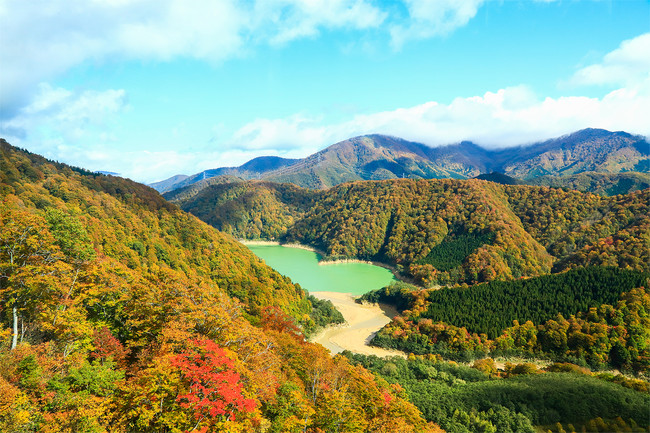It’s been 5 months since I moved to Okinawa. I often feel that I have become accustomed to Okinawa.
People, land, buildings, nature, climate, history and culture full of originality, everything was fresh, but there was also nostalgia for my hometown Tohoku.
At that time, it was the existence of a family in the neighborhood that unraveled my heart.
When I saw my neighbor’s child playing while singing a trendy anime theme song and playing a trendy word game with “Nandeyanen”, I was strangely relieved that it was “the same as the mainland of Japan.”
When I heard the child’s father say, “There are areas on the main island of Okinawa where I can’t communicate with each other,” it felt like one of the burdens in my heart had been relieved.
By the way, where does this kind of “diversity” in Okinawa come from? Unique language and customs remain on the island and in the area. It’s very interesting.
You can also get a glimpse of the history of interaction with “different cultures” at “Katsuren Castle” introduced this time. The hint of “diversity” may be hidden in such a place as well.
Coins of the distant Roman Empire

The ruins of Katsuren Castle are located in Uruma City, central Okinawa Island, and were registered as a World Cultural Heritage Site in 2000 as “Gusuku Sites and Related Heritage Sites of the Kingdom of Ryukyu”.
The last castle owner, Amawari, is said to have brought prosperity to the area through trade with countries around the world. It is said that the coins of the Roman Empire were found in the strata of that time (14th to 15th centuries). Other Ottoman coins have also been found in the 17th century strata.

Amawari caused a coup d’etat and became the castle owner, not seeing the former castle owner drowning in sake under oppression.
He also had his ambitions, perhaps because of the glory of trade. He was thinking of capturing the Ryukyu Kingdom (Shurijo Castle). It is said that it was destroyed by the royal army in 1458, but it seems that there are many parts that are shrouded in mystery because there are no traces of a big battle in the castle.

Katsuren Castle was said to be an “impregnable” castle. From the top, there are one Kuruwa, two Kuruwa, three Kuruwa, and four Kuruwa, which are surrounded by stone walls, each of which is connected by stairs. You can see from this model that the castle was built using a natural cliff.
The area around the castle is a wetland with abundant water that is said to be a “bottomless swamp,” and it was usually a farmland that supported the finances, but in the event of an emergency, it played a role in stopping intruders.
The secret of the impregnable Katsuren Castle and stone stairs

The stairs leading to the upper Kuruwa have some ingenuity.
By building a staircase that goes around the castle from the right side in front of the castle, the intruder’s right hand is on the stone wall side. That is, I tried to limit the movement of my right hand holding the weapon.

The slope is steep to exhaust the intruder’s physical strength. From the upper Kuruwa, it is easy to grasp the number of intruders and make attacks.
There are still some ideas for the stairs, but I will explain the continuation with the stairs to the one Kuruwa.

It is also interesting to see that the color of the sea changes as you climb up.
Is it because the way the sun’s light is reflected changes depending on the viewing angle?

The ruins of the main hall, 17m long and 14.5m deep, have been found in the second Kuruwa.
It has a structure with many pillars like Shurijo Castle, and it is said that it was a solid structure with foundation stones (stones that support the pillars of the building). It is believed to have been the most important place in Katsuren Castle.

It is made along the stone stairs from the second Kuruwa to the first Kuruwa.
This is called “Ushinujigama”. Ushinuji means “to hide and surpass”, and Gama means “natural cave”.
This cave is connected to the cave on the side of the one Kuruwa, and in the battle of the royal army that was said to have occurred in 1458, Amawari used this loophole to escape to the present Yomitan Village. There is also a legend that it was.

By the way, it is finally the stairs to the one Kuruwa. It is the “final line of defense” for the castle.
Continue to the second part.
It ’s Okinawa soba, but “Udun”

Finally, I would like to introduce restaurants in Nago City, the northern part of the main island of Okinawa.
It is a shop called “Udun”.

“Udun” is a word that refers to the residence of the Ryukyu royal family.
I was at a loss about “Goya Chanpuru set meal” and “Soki soba”, but here is what I ordered.

It is “Inamduchi set meal”. Inamuduchi?
I didn’t know what the name meant, but I looked it up after I got home. Ina is “wild boar” and Muduchi is “modoki”. It seems that the court used wild boar meat, but it was made into a home-cooked dish using pork.
The soup stock of the ingredients and the white miso went well together, and it was really delicious. If you have a chance, please try it.
See you next time.

























































